Amazing Photos: Titan, Saturn's Largest Moon
New Images: Huge Seas on Saturn's Moon Titan
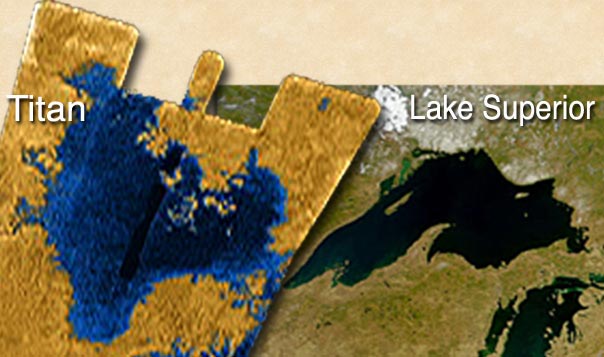
This side-by-side image shows a Cassini radar image (on the left) of what is the largest body of liquid ever found on Titan's north pole, compared to Lake Superior (on the right). This close-up is part of a larger image and offers strong evidence for seas on Titan. These seas are most likely liquid methane and ethane.
Astronomers Puzzled by Titan's Missing Craters
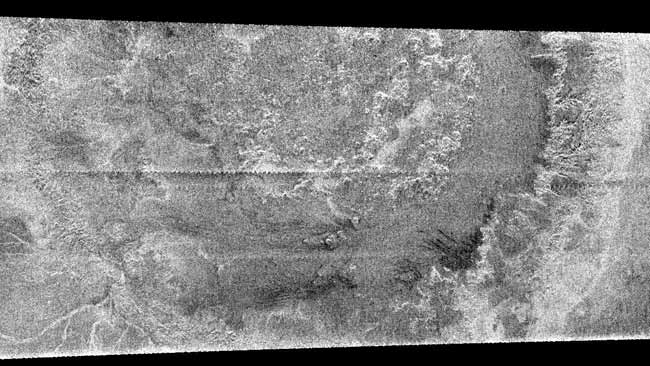
The huge impact crater Menrva was spotted by the Cassini radar instrument on 15 February 2005 on Titan and has an outer diameter of 440 kilometers. It resembles a large crater or part of a ringed basin, either of which could be formed when a comet or asteroid tens of kilometres in size crashed into Titan.
Earth's Future Glimpsed on Titan
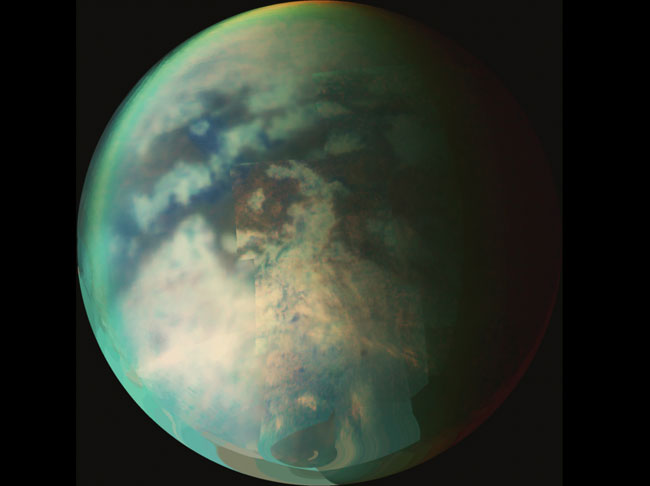
Composite view of Titan built with Cassini images taken on Oct. 9 and Oct. 25, 2006.
Huygens Data Paint Turbulent Picture of Titan
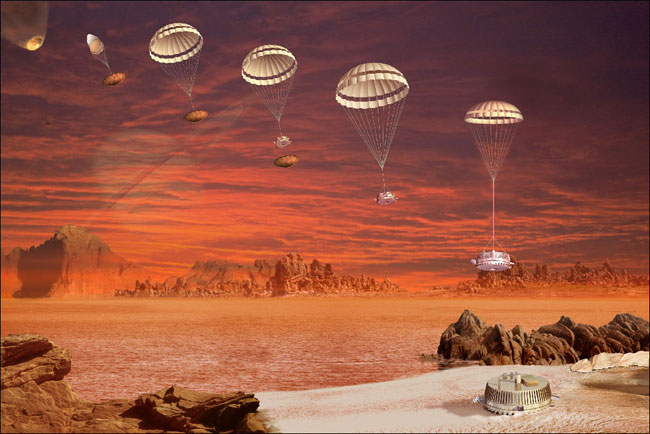
Artist's impression of the descent and landing sequence followed by the Huygens probe to Titan.
On Titan, A Dreary Drizzle
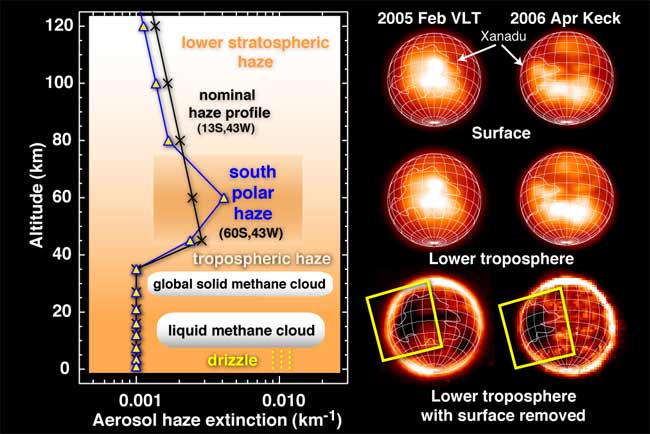
Near-infrared images of Titan's surface and lower troposphere can be subtracted to reveal widespread cirrus-like clouds of frozen methane (lower images) and a large patch of liquid methane (dark area within box) interpreted as clouds and morning drizzle above the huge continent of Xanadu (outline). At left is a chart of Titan's aerosol haze versus altitude.
Titan Has More Oil Than Earth
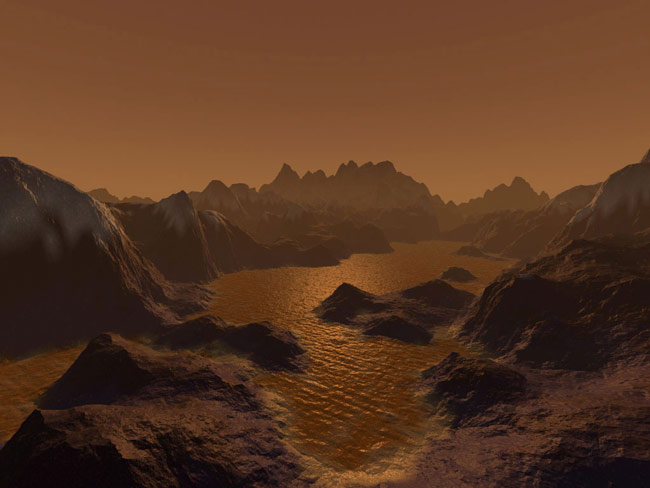
An artist's imagination of hydrocarbon pools, icy and rocky terrain on the surface of Saturn's largest moon Titan.
Evidence for Ocean Found at Saturn's Moon Titan
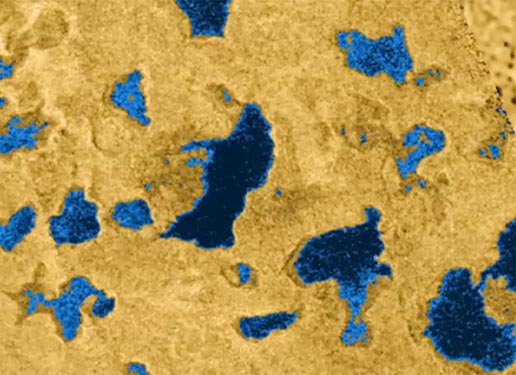
This image shows bodies of liquid near Titan's north pole. It show that many of the features commonly associated with lakes on Earth, such as islands, bays, inlets and channels, are also present on this cold Saturnian moon.
Get the Space.com Newsletter
Breaking space news, the latest updates on rocket launches, skywatching events and more!
Veil Lifts on Titan's Great Secrets
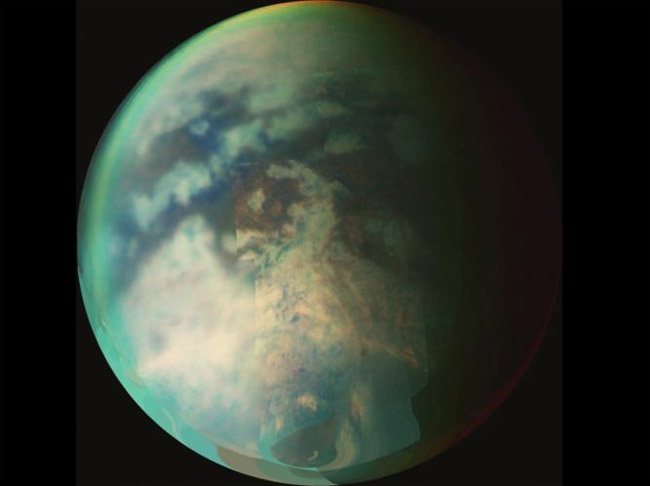
A composite of several Cassini images shows Titan's varied surface, including possibly a remnant of an old impact basin (large circular feature near the center of Titan's disk). Mountain ranges to the southeast of the circular feature, and the dark linear feature to the northwest of the circular impact scar may be evidence of past tectonic activity.
Saturn Surprises Spur Cassini Mission Reprise
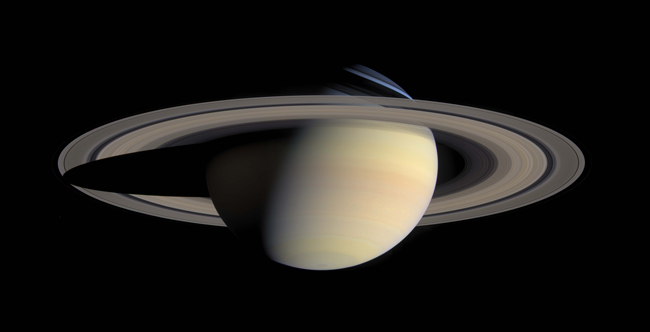
The most detailed image ever made of Saturn and its rings was sent by the Cassini spacecraft on October 6, 2004.
On Titan: It's Raining Methane
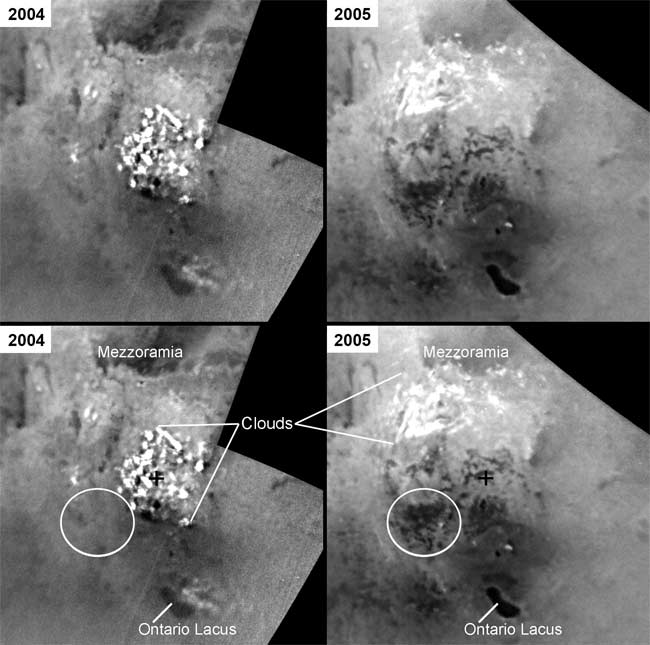
Cassini images of Titan's south polar region taken in 2005 (right top and bottom) show dark areas that were not present in the 2004 images (left top and bottom) represent lakes. During the year that elapsed between the images, clouds (bright features) frequently appeared and suggest methane rain could be responsible for the new lake features.
Join our Space Forums to keep talking space on the latest missions, night sky and more! And if you have a news tip, correction or comment, let us know at: community@space.com.

Space.com is the premier source of space exploration, innovation and astronomy news, chronicling (and celebrating) humanity's ongoing expansion across the final frontier. Originally founded in 1999, Space.com is, and always has been, the passion of writers and editors who are space fans and also trained journalists. Our current news team consists of Editor-in-Chief Tariq Malik; Editor Hanneke Weitering, Senior Space Writer Mike Wall; Senior Writer Meghan Bartels; Senior Writer Chelsea Gohd, Senior Writer Tereza Pultarova and Staff Writer Alexander Cox, focusing on e-commerce. Senior Producer Steve Spaleta oversees our space videos, with Diana Whitcroft as our Social Media Editor.









